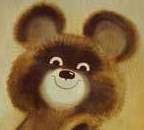My rating system was primarily designed for music, to which I been listening since childhood, but it can also apply to books, movies, and other stuff. The difference between the amount of stars is no merely quantitative, it is also qualitative, and here it is:
THIS SUCKS!!!!!!! (no stars)
This is really bad. I hate it! I will tell you exactly why in the body of the review.
A DM Book example of This Sucks!!! is the Cosmos Builder, Volume 7 of the Gygaxian Fantasy Worlds series. The reason that I dislike this book so much is that it covers no new ground beyond the Manual Of The Planes. With the name like Cosmos Builder I expect a modicum of modern theoretical physics and Cosmology, so that you can come up with something original, however, the author of this book is innocent of any Cosmology, and the purpose of his volume is to help you locate your setting within the AD&D Cosmology as described in the Manual Of The Planes.
NO STARS
Don't buy it!
Don't waste your money.
This record flat-lines.
Good music typically shows off talent, originality, technique, and this record is devoid of all three. It's nothing new. Others have done it better. In film this is not a remake, but derivative of a previous film.
In DM books, it offers nothing that I can use in my game. For an Example, consider any of the so-called Retro-Clones. Why bother with Labyrinth Lord, when I have the original D&D Books, Moldway red and blue boxes, etc.?
ONE STAR
Don't waste your money.
Buy the hit single instead.
Too often musicians and their producers pursue the riches via a hit single that gets all the production resources and scores high on the charts, the rest of the album comes as an afterthought, songs on it useless filler material.
In DM books, this text has but a single useful idea. It can be as simple as an original encounter table. An example of the ONE STAR DM writing is the original rulebook for the Top Secret TSR game. The only useful thing is a table which lists locations, where to set up encounters. This table lists various locales, which with some modificatiosn can be used in D&D.
TWO STARS
Body of Work, too bad it's lifeless.
Spark needed to breathe life into it.
There might be one or two good songs on record, but the work is consistent and the presence of an artist is felt. If the music itself was better, it would rate more stars. If you are a collector or a follower of this particular artist, this record might be worth more stars to you.
In DM Books, the ideas are scarce, the writing is sparse, lists and tables substitute for prose, leaving you to figure out what to do with it, sort of like the OD&D original three books.
THREE STARS
A couple of great driving songs.
This is a good album worth having. There are more good songs on it than the one or two singles you can get separately. The rest of the album has merit, but not as good as the best songs on it.
This is typically amateurish DM writing. It is serviceable, but not academic, lacks depth or profound originality as far as the game mechanics are concerned. An example of the THREE STAR DM Writing are sections of the Gygax DMG and Moldway's BLue Book on Wilderness Design. The problem with that writing is that it fails conceptually to mirror the elegance of the Dungeon Adventure design with the Wilderness Adventure. Wilderness Survival Guide would fall here, because it does not introduce any new ideas for wilderness design. Unearthed Arcana can also fall under the THREE STAR rating.
FOUR STARS
Your friends will think it's cool!
You can listen to the whole album consistently, and it won't disappoint. Furthermore, if you play it for your friends, there will be no embarrassing songs on it.
In DM Books, this would be Five Stars, except for one thing, that keeps it from perfection. Dungeoneer's Survival Guide and the D&D 2.5 Players Option Combat and Tactics are examples of the FOUR STAR Books. Both books are well written and introduce a wealth of new ideas, however neither transcend the framework of the original AD&D concepts to create something new.
FIVE STARS
Your friends will think you are cool!
Transcendent spiritual stuff!
Profound personal meaning!
This has talent, originality, substance, meaning and depth. Granted, personal meaning is the height of subjectivity, but this work generally has to have great artistic merit to get through to me.
In DM Books, this is Synergy! This is writing that comes together! It combines good writing with new ideas and game mechanics comprehensibly explained using common everyday language.
The best example of 5 Star DM writing is the How To Design a Dungeon Adventure section in the DM's Section of the Moldway D&D Red Box Basic Set. Another example of a FIVE STAR Book is Gary Gygax's Oriental Adventure.








